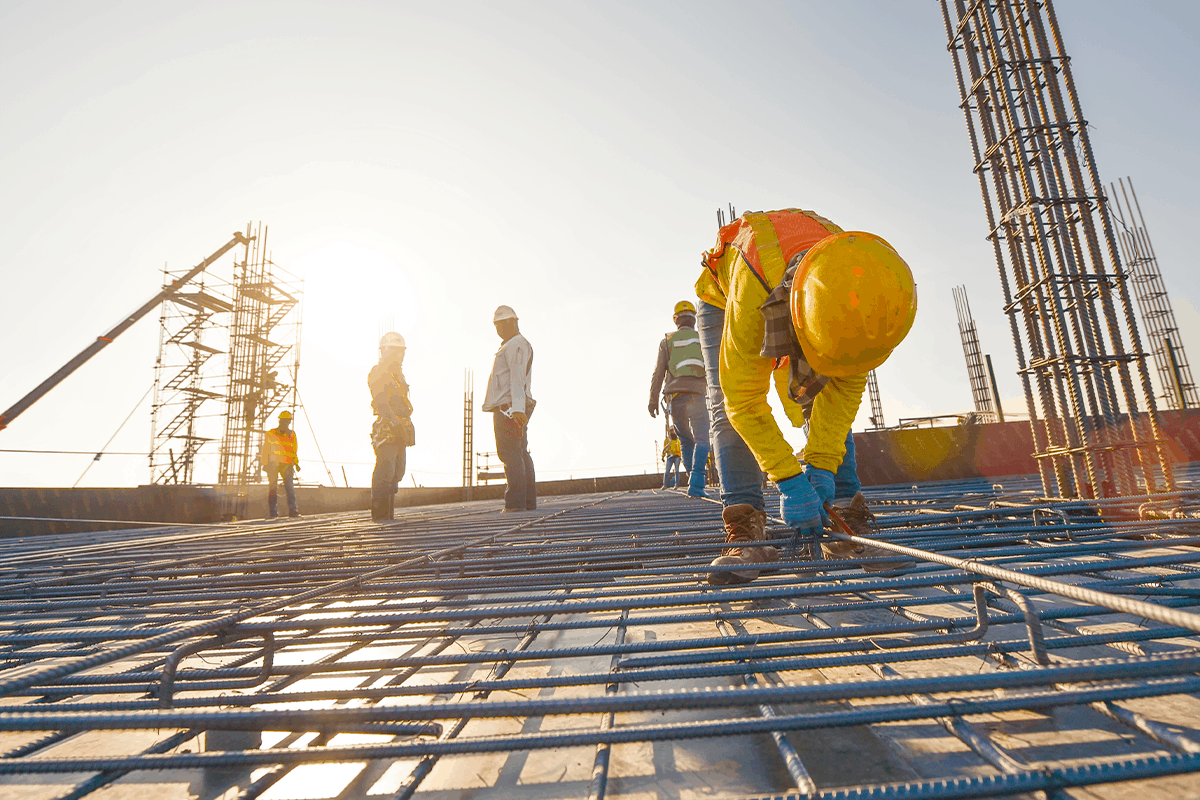
- What can construction companies do to improve workplace safety?
- What are 3 ways to create an on-the-job safety culture?
- Can Healthcarelive help construction companies improve their safety record?

Construction companies understand the importance of jobsite safety. The only disconnect occurs from their on-the-ground application of these concepts. We all know that accidents lead to project delays and cost overruns, higher insurance, and reputational damage. Having a strong safety record can have an entirely opposite effect.
While these are obvious statements, there is one thing an organization can do to improve their worksite safety record that may not be so obvious: Engage your workforce in a culture of safety. Here’s how to do it.

Construction site safety can and should move beyond a set of prevention-oriented activities. A safety culture incorporates proactive thinking about how to do the job in a way that protects your “construction athletes” from harm.
The core values of the construction company should incorporate safety first but then back it up with training and constant evaluation to lessen risk. Ultimately, your goal should be to create a workplace with a safety mindset baked right into your culture.
Creating a workplace safety culture should include these 3 elements:
- Ongoing risk assessment
- Ergonomics training
- Establishing immediate onsite injury care
Your jobsite safety team should walk the site every workday to look for any potential problems. Holding brief safety meetings before each shift will also put these issues top of mind before your employees even pick up their first hammer or start up a machine.
You can engage construction teams further by soliciting help from employees at all levels of the business. Consider appointing one safety mentor on every crew to help bring attention to the potential for harm throughout the day. The idea is for one key player on each construction site team to consider the job from a safety perspective and not just by the tasks at hand.
Some suggestions for a safety mentorship program include:
- The safety mentor should be a volunteer
- The safety mentor could receive extra training in the importance of workplace safety
- You could rotate the safety mentor out each quarter for a new volunteer
- The volunteer could receive a pay bump or other incentive for participating
Beyond participating in the identification of onsite safety concerns, this employee could participate in reviewing your company’s safety program or creating on-the-job equipment checklists. The idea is to spread daily awareness of workplace safety across every jobsite team by engaging workers in their own health and security.
- Applying force
- Bending
- Lifting heavy loads
- Repeating movements
- Stooping
- Stretching overhead
- Using heavy vibrating equipment
- Working in awkward positions
Should a workplace safety incident occur, it should be immediately triaged. In the past, this kind of quick response meant investing in an onsite medical or safety professional. Given that nearly 90% of all construction site injuries can be treated without additional care, a trip to the ER is overkill, driving up healthcare costs and OSHA reportable events.
Today, a comprehensive musculoskeletal care solution can provide members with access to orthopedic experts 24/7/365. These licensed orthopedic experts can be at your fingertips on any device connected to the internet within just a few minutes and accessible in more than 300 languages. This type of virtual healthcare can save construction companies up to 80% on injury costs.
The goal of these virtual visits is to determine the difference between an ER or urgent care-worthy injury and a simple strain or sprain—and ultimately save you money. However, it also provides workers with the comforting sense that your company is devoted to their health and well-being.

- Ergonomic assessments
- Personalized safety training and coaching programs
- 24/7/365 complete injury care
- Clinical services and more
March 22, 2022


